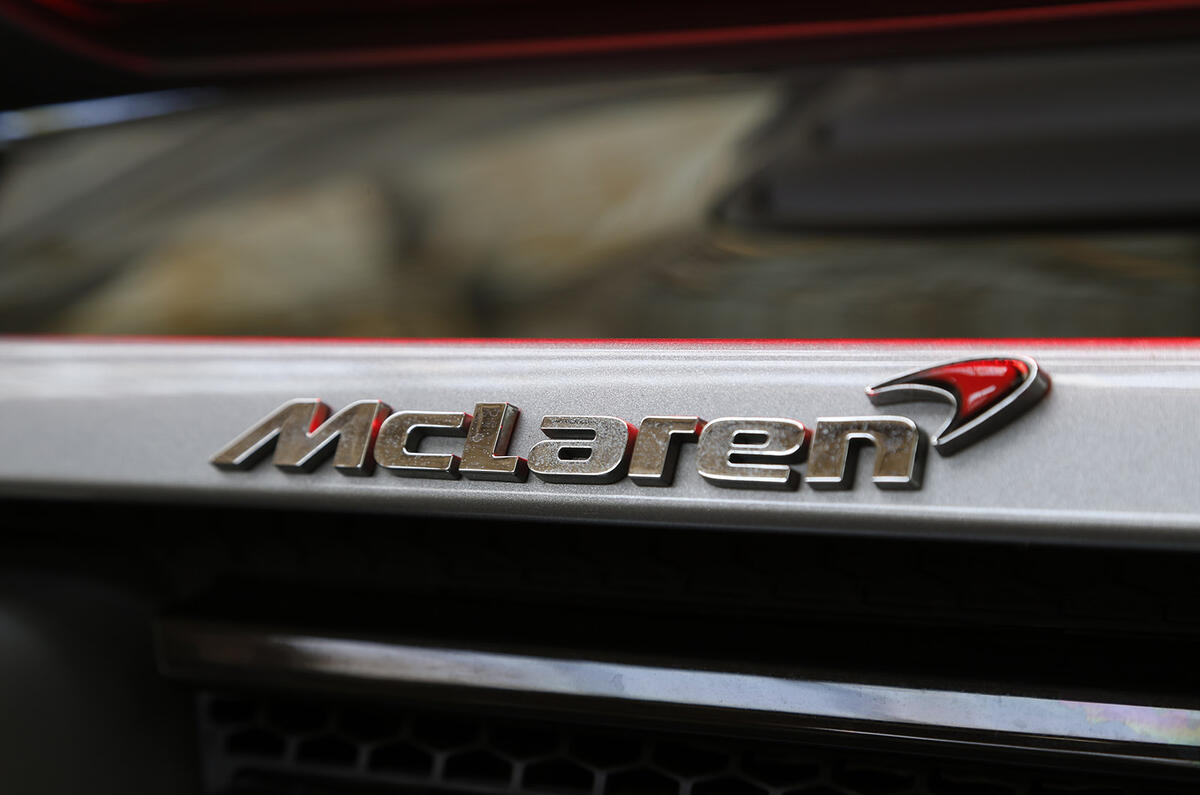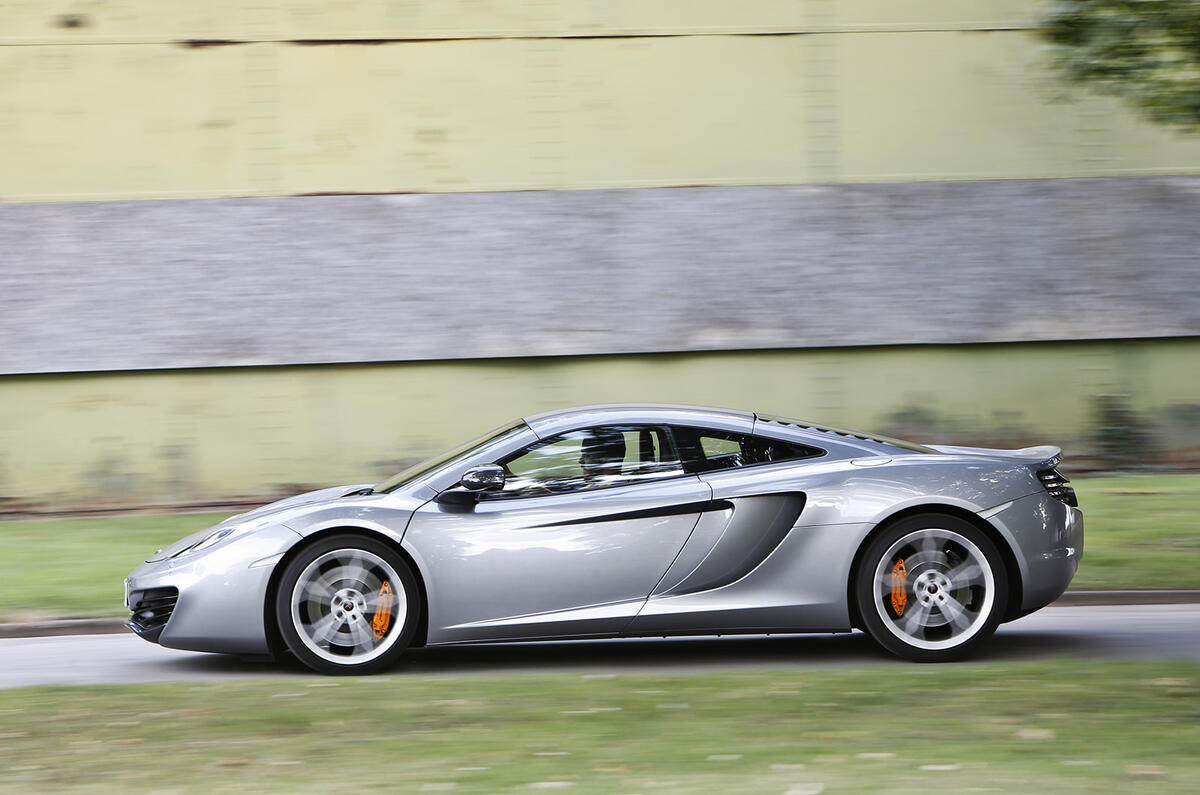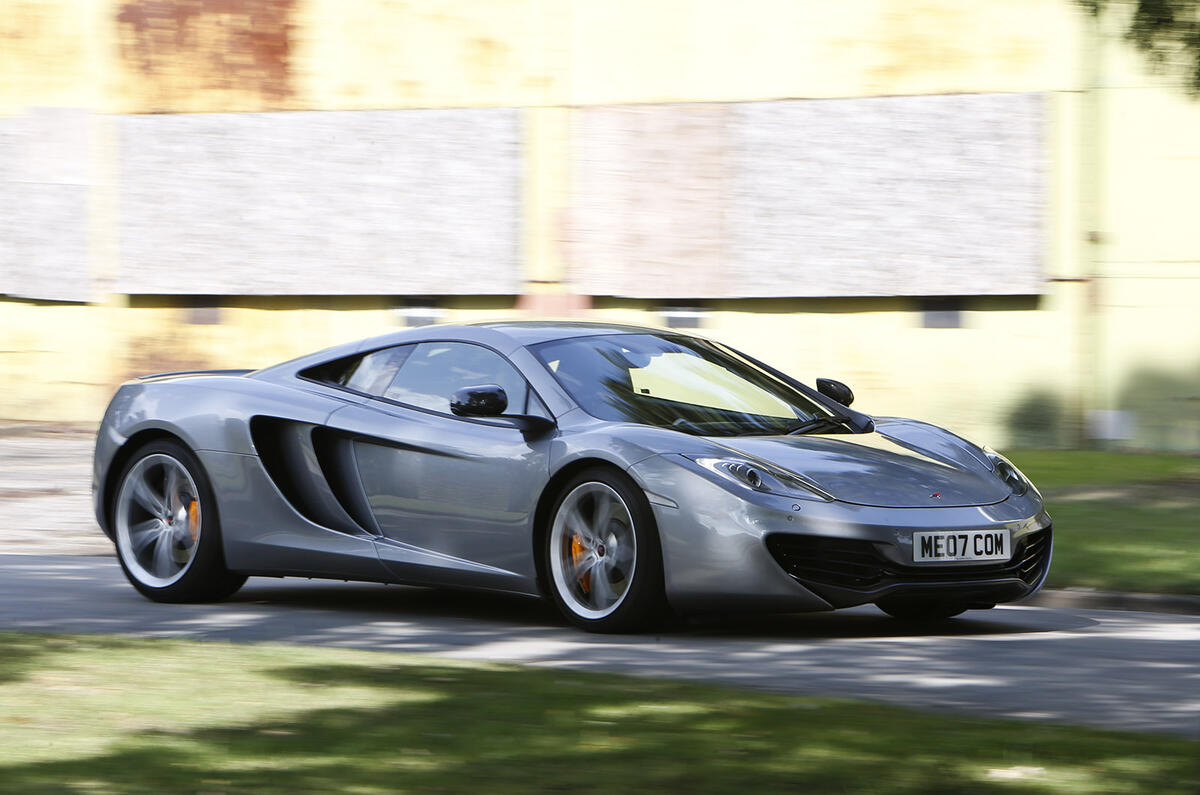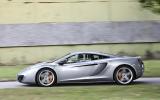There are worse dilemmas to have, but compared to our previous comparison tests this feels – to me, anyway – like the twin-test with the toughest choice to make.
Spending money on a supercar is not about practicality or running costs or lengths of warranty. A supercar is a pure luxury good. A supercar has to fill you with want, purely and simply.
If multiple-cylinder donkeys and smoking tyres and noise and drama fail to float your boat, all is lost. You don’t need a supercar. There’s a decent chance that you’ll buy a boat instead.
Both of these cars have given our boats buoyancy in the past. McLaren’s MP4-12C is the used car here although, in many respects, it is actually the newer design. It made its debut with its carbonfibre tub and 3.8-litre twin-turbocharged V8 engine – both of which form the basic underpinnings of McLaren’s P1 and its 12C GT3 car – in 2011. And things didn’t finish there.
This is an early car, hence the ‘MP4-12C’ written on its floor mats rather than just ‘12C’, and why it has fallen from its £168,000 original asking price into the same bracket as this new Aston Martin V12 Vantage S.
But the MP4-12C bears upgrades from the point in 2012 when the ‘MP4-’ part of the name was dropped and the car became simply the 12C, so it benefits from an increase in power from 592bhp to 616bhp, recalibrated engine management and other software upgrades.
That’s not all. This year, when McLaren launched the 650S and opted to drop the 12C, the 3000 cars that it had built to that point were eligible for another round of upgrades, giving them the latest version of the Android-based multimedia and navigation system, and making adjustments to the way that the active aerodynamics work – the airbrake pops up over crests to improve stability, and drops further again in a straight line to cut drag, for example.
McLaren has moved at the speed of a racing team with some of its upgrades and product roll-outs, but it has clearly learnt quite a lot about good old-fashioned customer service at the same time. It looks after buyers of cars who might otherwise have thought they had been forgotten and neglected.
We’ve become accustomed to software and app upgrades. Why not automotive ones?
The Aston, although the new car here, feels older of school by comparison. Its design appeared in 2005 and, although it has been heavily revised since (early cars and this one are leagues apart from each other), the basics feel the same.
Its engine sits in its nose and is, in this case, a brawny 6.0-litre V12 making 565bhp. It drives the rear wheels via what we’ve come to know as a rather awkward-shifting automated manual gearbox.
However, the Aston does have a limited-slip differential, whereas we know that the McLaren gets a dual-clutch automatic ’box but no LSD. We’ll come back to that.
Inside, the Aston feels as quaint as ever by most industry standards. You get the very obvious impression that it is handbuilt, albeit assembled from fine materials which clothe an aluminium structure that places clear demands on the interior architecture.
The transmission tunnel is high so that the sills need not be, for example. Fit and finish are good but you’re reminded of Aston’s tight budgets when you try to fiddle with the stereo or navigation systems, both of which could do with more than a mere software update.
So it’s the three-year-old McLaren, which can be had with a factory-backed, unlimited-mileage warranty, that actually feels more modern inside. Fit, finish and material choices were things that McLaren nailed from the very start, and this one has aged well.
Less convincing at its launch, and still so in this MP4-12C today, are the shape of its seats, which lack support under thigh and laterally. They’re also electrically controlled by some switches located baffingly on the front of the seat base, out of view and bearing no resemblence to the seat itself. You get used to it, I suppose.
Having flat seats is not a criticism that you’d level at the Aston, particularly in this V12 Vantage S form, which gets extremely heavily sculpted buckets. McLaren might argue that its chairs are more comfortable on longer journeys and more suited to daily use. It’s plausible.
Certainly, the McLaren’s ride is still a thing of wonder that makes a 12C a genuinely usable everyday car, its linked hydraulic suspension masking bumps and ruts in a way that no current supercar – nor most family cars, to be honest – can approach.
Its engine and gearbox excel in daily driving, too. The gearbox’s auto mode is intelligent enough, and although the shift paddles are stiff, it shifts sweetly in manual mode.
You don’t notice the turbo lag so much at easier efforts, either.
Aston Martin has a fine history of making grand tourers, too, but the V12 Vantage S isn’t one of them. It is loud, its engine asks to be revved, its gearbox is hesitant at low speeds and the ride is firm. It’ll have you know that it is a supercar, and it would like to be driven accordingly. So I do.
And then the V12 Vantage S reminds you what a brilliant chassis it has; what a great-handling car the Vantage has become. Yes, there’s considerable weight over the nose, but plant it by braking towards an apex and it goes diligently where you aim it.
At that point, there is enough power to let you play with the chassis entirely as you choose. The differntial hooks up, the rear tyres become mobile and it can be steered beautifully on the throttle. Even the gearbox is less irritating when it’s punching through shifts brutally.
Here the McLaren’s shortcomings – its turbo lag and its flat seats – are highlighted. Its balance errs to understeer unless you absolutely nail your trail-braking perfectly, deliberately to unsettle the rear.
Get that right and it is extraordinarily fast on corner exit; get it wrong and you’ll be waiting for the front to come back to you, and both while propping yourself up in the seat. I know that outright handling balance isn’t everything, particularly on the road, where the pace of both makes it almost, but not quite, an irrelevance.
But what happens at the limit is hinted at at lower speeds, as you exit roundabouts or cleave a line onto a slip road. The Aston feels mobile and alert; the MP4-12C clean and capable.
The Vantage offers a superior noise, too. A sense of drama. Theatre. Ultimately, given that most owners will sit in a Range Rover from day to day and get the supercar out when the weather is good and there are no clients to visit, drama is good. From that perspective, the Aston gives you more love and, ultimately, that tells in the verdict.
The verdict
The McLaren is fast and relatively satisfying but leaves our outright desire holed below the waterline.
The Aston Martin is less satisfactory as mere transport but it never forgets what it is supposed to do. It’s supposed to grab you and make you want to drive it for no other reason than you desperately wawnt to. That it does. And that’s why it gets our nod.
Aston Martin V12 Vantage S
Price £138,000; 0-62mph 3.9sec; Top speed 205mph; Economy 19.2mpg; CO2 343g/km; Kerb weight 1665kg; Engine V12, 5935cc, petrol; Power 565bhp at 6750rpm; Torque 457lb ft at 5750rpm; Gearbox 7-speed robotised manual
McLaren MP4-12C
Price £130,000 (price new: £168,000); 0-62mph 3.3sec; Top speed 207mph; Economy 24.2mpg; CO2 279g/km; Kerb weight 1434kg; Engine V8, 3799cc, twin-turbo, petrol; Power 616bhp at 7000rpm; Torque 443lb ft at 3000-7000rpm; Gearbox 7-speed dual-clutch auto
Get the latest car news, reviews and galleries from Autocar direct to your inbox every week. Enter your email address below:
































Join the debate
Add your comment
NEITHER!
Im not sure...
Aston